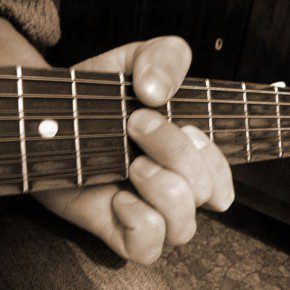Circle of fifths in major keys: a clear diagram for those who like clarity.
The circle of fifths of tonalities, or, as it is also called, the circle of fourths-fifths, is in music theory a schematic representation of sequential tonalities. The principle of arranging all tonalities in a circle is based on their uniform distance from each other along the intervals of a perfect fifth, a perfect fourth and a minor third.
There are two main modes used in music – major and minor. Today we will take a closer look at the circle of fifths in major keys. The circle of fifths of major keys was created to make it easier to understand the existing 30 keys, of which 15 are major. These 15 major keys, in turn, are divided into seven sharp and seven flat, one key is neutral, it does not have any key signs.
Each major key has its own parallel minor key. To determine such a parallel, it is necessary to build down the “minor third” interval from a given note of the selected major scale. That is, count three steps (one and a half tones) from a given starting point in the direction of lowering the sounds.
How to use the circle of fifths in major keys?
This schematic drawing gives an idea of the order of scales. The principle of its operation is based on the gradual addition of signs to the key as this circle passes. The key word to remember is “fifth”. Constructions in the circle of fifths of major keys are based on this interval.
If we move around the circle from left to right, in the direction of increasing sounds, we will get sharp tones. By following, on the contrary, from right to left along the circle, that is, in the direction of lowering the sounds (that is, if we build fifths down), we get flat tones.
We take the note C as the starting point. And then from the note to, in the direction of increasing the sound, we line up the notes in fifths. To construct the “perfect fifth” interval from the starting point, we calculate five steps or 3,5 tones. First fifth: C-sol. This means that G major is the first key in which the key sign should appear, naturally sharp and naturally it will be alone.
Next we build the fifth from G – G-D. It turns out that D major is the second key from the starting point in our circle and it already has two key sharps. Similarly, we calculate the number of sharps in all subsequent keys.
By the way, in order to find out which sharps appear in the key, it is enough to remember the so-called order of sharps once: 1st – F, 2nd – C, 3rd – G, then D, A, E and B – also everything is in fifths, only from the note F. Therefore, if there is one sharp in the key, then it will necessarily be F-sharp, if there are two sharps, then F-sharp and C-sharp.
To obtain flat tones, we build a fifth in a similar way, but following the circle counterclockwise – from right to left, that is, in the direction of lowering the sounds. Let’s take the note C as the initial tonic, because there are no signs in C major. So, from C downwards or, as it were, counterclockwise, we build the first fifth, we get – do-fa. This means that the first major key with a flat key is F major. Then we build a fifth from F – we get the following key: it will be B-flat major, which already has two flats.
The order of flats, interestingly, is the same order of sharps, but only read in a mirror way, that is, in reverse. The first flat will be B, and the last flat will be F.
In general, the circle of fifths of major keys does not close; its structure is rather more like a spiral. With each new fifth there is a transition to a new turn, like in a spring, and the transformations continue. With each transition to a new level of the spiral, key signs are added to the next keys. Their number is growing in both the flat and sharp directions. It’s just that instead of the usual flats and sharps, double signs appear: double sharps and double flats.
Knowing the laws of harmony makes it easier to understand music. The circle of fifths of major keys is another proof that the variety of modes, notes, and sounds is a clearly coordinated mechanism. By the way, it is not at all necessary to build a circle. There are other interesting schemes – for example, a tonal thermometer. Good luck!



